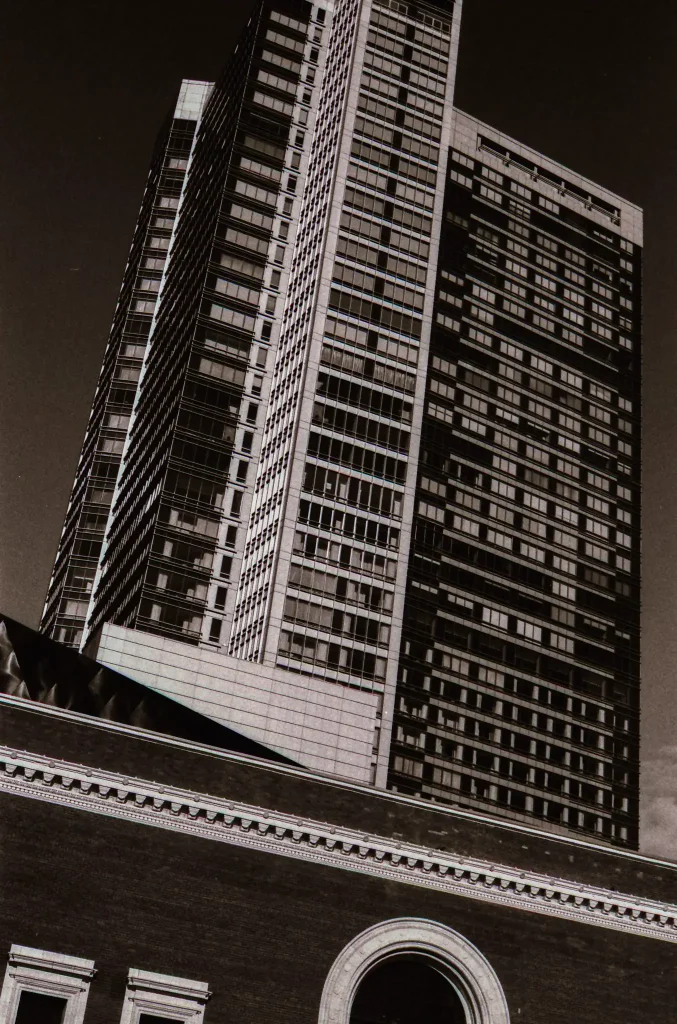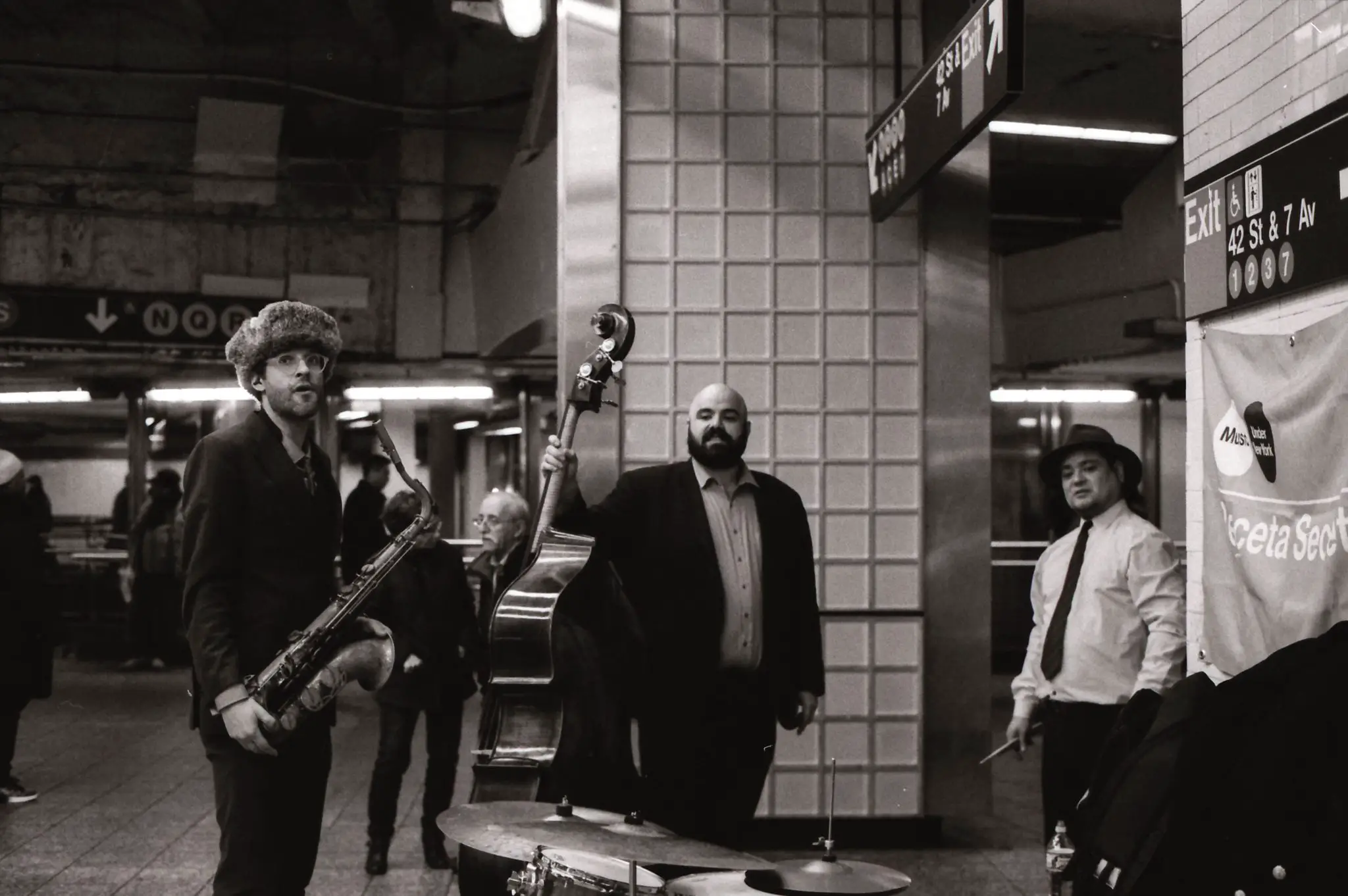Photography, like music, can be a social activity.
I increasingly appreciate the social aspect of photography. Although I belong among the admirers of Vivian Maier — who could not be fascinated by the story of the street photographer-nanny discovered only at the moment of her death — I am not a recluse as she apparently was. I like participating in a community. There is much that we can do by sharing, and as powerful as social media and video streaming are, human contact in “realtime” ought to remain the human norm, unless and until we pass through the uncanny valley into the singularity of merging mind and machine. We should, or at least I do, celebrate what is convivial in our pastime. Too much of our lives are atomized even if we happen to be around others.
Here is my report on such a pleasurable occasion, enjoying photography with company. I recently spent a Sunday afternoon with another enthusiast talking shop and printing a few images. My friend — we will call him “Henry” — is a colleague who I found out early on is a fellow photographer. He is significantly more experienced than I am, and it shows. He is much better at our mutual hobby, so much so I would not hesitate to say the difference in quality is objective. At a glance, I could see clearly that his pictures were produced with greater technical competence than my own and more pleasing composition as well. Compared to him, I am frivolous in taking snapshots. His superiority is to my benefit, however, because I can learn through our conversation, and, unlike sports which are competitive there is no score by which he would be deemed the winner, I the loser. As a teacher in my day job, I appreciate the necessity and the pleasure of being a student at all times; to be a teacher is the alternative for those who must make a living, unable to be a student of life. As much as the possession of a modicum of native talent, an attitude humble and open is essential to any improvement — photography is a skill to be practiced, meaning those with mastery can guide novices, who otherwise would through repetition succeed only in making their mistakes their habits.
I honor Henry with this account of his example and his insights. To begin, he and I are focused differently. His portfolio is oriented toward his family, especially on travel. He likes landscapes, in color balanced between naturalistic and vivid. He uses wide angle lenses. As importantly, his equipment is exclusively digital at this point. While I am taking photographs, the concept encompasses so many options that my preferences for street signs, in black and white, at normal to telephoto lengths, on film pushed to 1600 mean I am pursuing a project with only a passing resemblance to his activity. He has mementos of his wife and daughter, posed before spectacular backgrounds. He has stopped down, so every detail is sharp. My framing of portraits makes them look like mugshots, or, as Henry observed, passport photos. I have opened the lens, for maximum bokeh.
We relaxed at his home office in Los Angeles. Sitting there, without any intent on Henry’s part to instruct me, I picked up a couple of points.
First, about the gear. Henry has many cameras. He promised his wife he would limit his collection to ten. He also has assembled an impressive display of toy soldiers, the classic lead models. (He gave me a Nikon Ti35 a while back — about which a blog later! I am grateful.) He has a few with the red dot. He has the latest in medium format. He also has lens galore. He allowed me to handle these items, and that is a treat, to peer through so many viewfinders, press the shutter button, and fire off a shot even if only of the hallway leading to his retreat. But Henry is emphatically not someone into gadgets for their own sake. He is using these tools. He can buy what he wants. But he buys what he needs. To acquire equipment is not the same as to grasp technique. The former is worthwhile only in pursuit of the latter. I should be like Henry. My wife would approve.
Second, about the organization. Henry has arranged everything neatly. Camera bodies are arrayed on a shelf, lens set up in rows nearby. The empty boxes, with manuals, are stacked, to ensure good values are obtained in sales and trades. Artists’ binders hold prints in archival quality sleeves. Little albums are labeled and organized. It looks as if someone had staged the scene, except, since I have been working with Henry, I know he maintains this order. It reflects who he is, and probably it would be impossible for him to leave anything out of place. My wife again would urge emulation.
Then, as we leafed through the large format hard copy that Henry has produced painstakingly, I concluded I could mimic him as to other aspects of an avocation he has pursued with the competence of a professional. He stops down. I should adapt to the situation. There isn’t a reason to open to f/2 and depend on the 1/6000 second shutter speed for a scene that has no background to blur. Fine detail is its own virtue. He also captures the broad expanse of the vista. I am literally narrow in the field of view. His perspective would be liberating. There is much content beyond my self imposed boundaries.
The only explicit advice Henry offered was persuasive as soon as he pulled out his prints. He said I had to try producing photographs, the physical objects. We are opposites. He shoots digital and displays analog; I, vice versa. Handling the tangible objects, I knew immediately I had to enter that next phase, another craft with its own challenges. Or like much of the film renaissance I am pleased to participate in, this final stage represents another reversion to the past; photos were prints before the advent of scanners. The photo as a print is not the same as the photo on a screen, in scale, texture, or color. It is an object in its own right, not a representation twice removed from reality.

I wonder if anyone is promoting slides, with the Kodak Carousel that used to be in the closet of every middle-class home. I didn’t anticipate when I was a child that I would be nostalgic for the slide show, but then again children fail to appreciate what adults tell them about their future likely because adults tell them.
How we photograph and why we do so may vary. In discussion, we progress. I suppose one could be a hermit photographer. I don’t want to be that person though. I’d like other people to see what I saw, right down to the angle that I emphasize. Then I’d like to reciprocate. I want to see through their eyes. My own perception will be more discerning, as I am trained from another perspective. You cannot take the same photograph twice even if you try. In the movie Smoke, the owner of an old fashioned corner cigar store takes a photo from his door every morning. A customer whose wife was shot and killed is flipping through the series of seemingly identical scenes, until he chances upon that morning of the murder, and there she is walking by a moment before. That is not the same image as the rest. Any subtle change and everything would be different. Photographs demonstrate for us the power of a single moment as no other art can. To look at them together with others puts us into that reality as we reimagine. The Kodak moment advertising slogan was so powerful because it was so social. It was about how we make our memories visible to others, opening our own individual past to a shared future.
Share this post:









Comments
MWAI on Photography as Social Activity – By Frank H. Wu
Comment posted: 19/08/2020
The writing is fresh, flows so well , the words and paragraphs are organized as perfectly as "Henry's" shelves and boxes. The contrast between you and your friend's approach to photography is so Stark it could be Iron-Man (get it??...okay never mind) but the similarities between you too, the passion for photography, the motivation to improve on your craft and have fun while you do are also very visible and evident. I might have had a dull day but it was a good day. After reading this i am happy to say I had a great day. Thank you Mr. Wu.
PS : and as a wise man said "A friend with 10 cameras is a friend indeed"
Oh. It's a 2018 post.